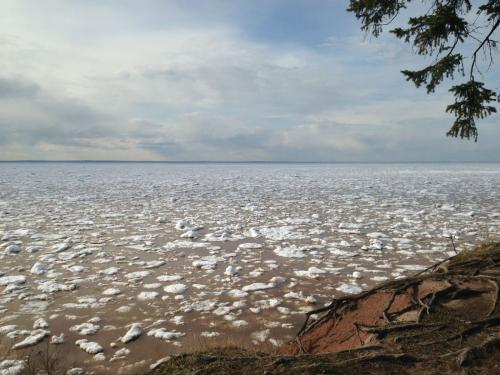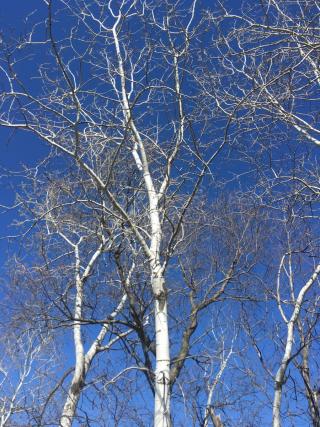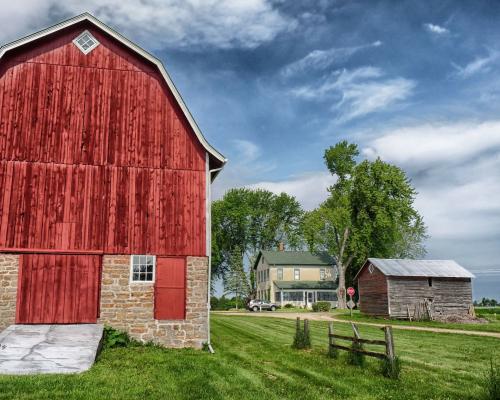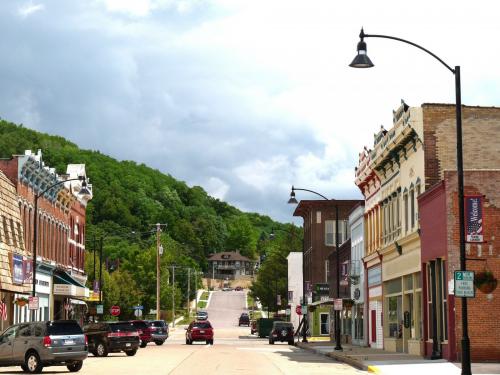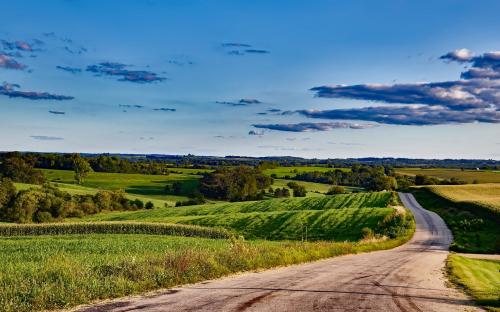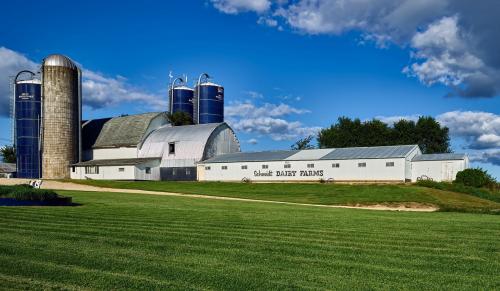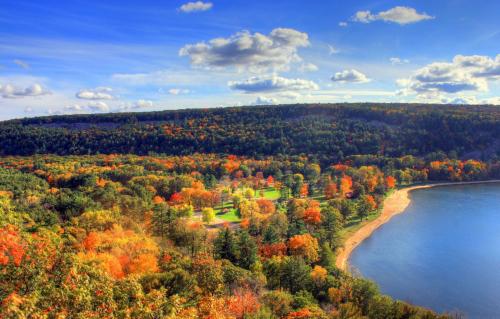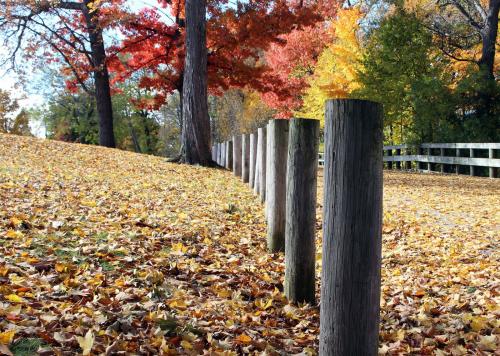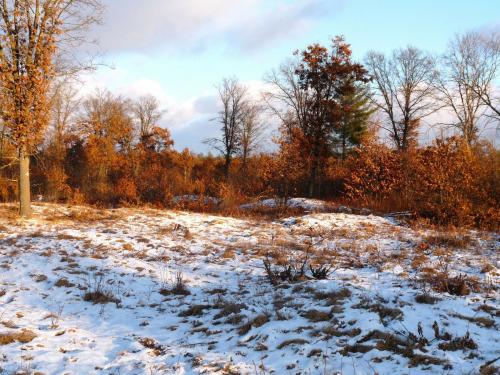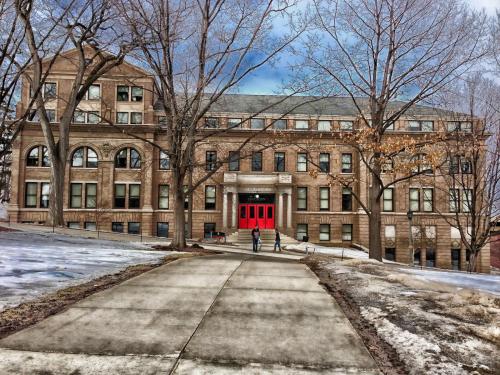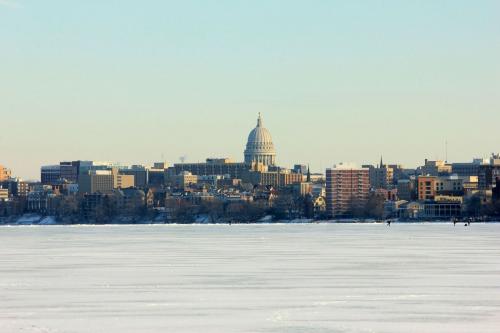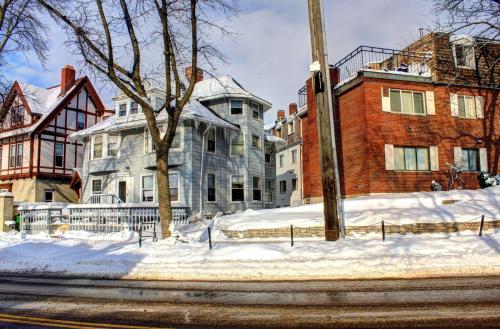Seasons in Wisconsin
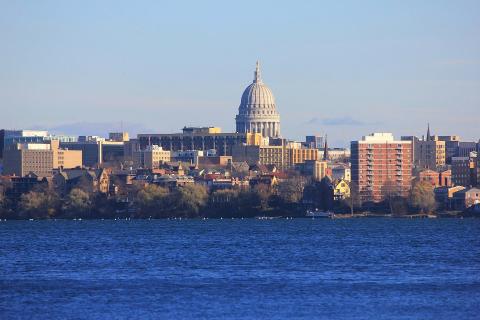
The main area of Wisconsin has a humid continental climate. Each season is different with large seasonal temperature fluctuations.
This is one of the central states of the United States. It is bordered by the two largest lakes - Michigan and Lake Superior. There are many agricultural areas, rivers, forests, lakes. This is one of the best places for a relaxing family vacation, hiking, fishing.
Seasons
Contents:
Spring in Wisconsin
The average daily temperature begins to rise in March. Gradually, the values change from 23 °F (-5 °C) in early spring to 53 °F (+11 °C) in April and 68 °F (+20 °C) at the end of May. With the arrival of warmth, the humidity rises and the number of rainy days increases. There is more precipitation from May to October than from October to April.
The state capital is the city of Madison. It is interesting for its original architecture, museums and art galleries. We recommend seeing the majestic Capitol, vaguely reminiscent of the Empire style. The second largest city in the state, Milwaukee, houses a bird-shaped art museum and a Harley Davidson factory. This city is considered the capital of Miller beer.
Climate of the Spring Months
| March Max average t°: 38 °F (+3 °C) Min average t°: 27 °F (-3 °C) Sundial in the day: 7 hours Rainy days: 7 days Precipitation: 2.5" (63 mm) |
| April Max average t°: 47 °F (+9 °C) Min average t°: 38 °F (+3 °C) Sundial in the day: 8.5 hours Rainy days: 9 days Precipitation: 4.1" (105 mm) |
| May Max average t°: 59 °F (+15 °C) Min average t°: 49 °F (+10 °C) Sundial in the day: 9.5 hours Rainy days: 9 days Precipitation: 3.8" (97 mm) |
(Milwaukee)
Spring Holidays
March 1st: National Women of Color Day.
March 17: St.Patrick 's Day.
Good Friday between 11 a.m. and 3 p.m. (usually falls in March or April).
April 1: April Fools' Day.
April 22: International Earth Day.
2nd Sunday of May: Mother’s Day.
last Monday in May: Memorial Day.
Summer in Wisconsin
A great time to travel to Wisconsin is summer. It is hot here from June to August. The temperature reaches 86-89 °F (+30 +32 °C). The highlands in the north of the state are slightly cooler. It often rains and thunderstorms are possible. There are no strong winds or hurricanes. Great time for camping, hiking or cycling.
During the summer, Wisconsin hosts many festivals, musical and national holidays. The largest is the Milwaukee Summerfest music festival. A major air show is taking place in the city of Oshkosh. Locals and visitors to the state love fishing, swimming in lakes, river rafting, boating.
Climate of the Summer Months
| June Max average t°: 71 °F (+21.5 °C) Min average t°: 61 °F (+16 °C) Sundial in the day: 10.5 hours Rainy days: 8 days Precipitation: 3.7" (93 mm) |
| July Max average t°: 78 °F (+25.5 °C) Min average t°: 69 °F (+20 °C) Sundial in the day: 11 hours Rainy days: 8 days Precipitation: 3.4" (87 mm) |
| August Max average t°: 77 °F (+25 °C) Min average t°: 68 °F (+20 °C) Sundial in the day: 10 hours Rainy days: 8 days Precipitation: 3.9" (98 mm) |
(Milwaukee)
Summer Holidays
June 14: Day of the American flag.
June 19: Juneteenth Day.
Third Sunday of June: Father’s Day.
July 4: Independence Day.
August 26: Women's Equality Day.
Autumn in Wisconsin
September and October are still quite warm months with many clear days. The temperature remains at the level of 59-68 °F (+15 +20 °C) for a long time. Autumn is long, warm and rather dry. The forests are covered with bright foliage. It gets colder to 32-42 °F (0 +6 °C) at the end of November. At this time, the flocks of geese had already flown away to warmer regions, and the trees had dropped their leaves.
This is real autumn, which is decorated with Halloween and a rich harvest of pumpkins. The proximity of the Great Lakes has a significant impact on the climate. There are many active and abandoned quarries in the state. This is a great place to train rock climbers. Tourists continue to enjoy the beauty of the local parks, one of which is national. Many have equipped campsites. The Ice Age Trail crosses the territory of Wisconsin. This is an equipped hiking trail.
Climate of the Autumn Months
| September Max average t°: 71 °F (+21.5 °C) Min average t°: 62 °F (+16.5 °C) Sundial in the day: 8.5 hours Rainy days: 7 days Precipitation: 3.1" (78 mm) |
| October Max average t°: 58 °F (+14.5 °C) Min average t°: 50 °F (+10 °C) Sundial in the day: 6.5 hours Rainy days: 7 days Precipitation: 3.2" (82 mm) |
| November Max average t°: 46 °F (+7.5 °C) Min average t°: 38 °F (+3 °C) Sundial in the day: 5.5 hours Rainy days: 6 days Precipitation: 2.7" (68 mm) |
(Milwaukee)
Autumn Holidays
1st Monday in September: Labor Day.
2nd Monday in October: Columbus Day.
October 31: Halloween (All Hallows' Eve).
November 11: Veterans Day.
4th Thursday in November: Thanksgiving Day.
Winter in Wisconsin
The classic winter comes in December. The temperature drops to -4 °F (-20 °C), sometimes to -14 °F (-25 °C). There is often heavy snowfall, which is welcomed by ski enthusiasts. Winter in Wisconsin is frosty, snowy, beautiful.
There are many good ski runs throughout the state. The locals love to go snowshoeing. Many bases offer horse rides to tourists. Horse trails do not interfere with hiking and cycling paths. Public ice rinks are flooded in cities across the state. Tours on the Ice Age Trail continue. The trail runs along the former border of a giant glacier and is very beautiful.
Climate of the Winter Months
| December Max average t°: 34 °F (+1 °C) Min average t°: 26 °F (-3.4 °C) Sundial in the day: 4 hours Snowy days: 7 days Precipitation: 2.4" (61 mm) |
| January Max average t°: 29 °F (-2 °C) Min average t°: 19 °F (-7.5 °C) Sundial in the day: 4.5 hours Snowy days: 7 days Precipitation: 2.2" (57 mm) |
| February Max average t°: 30 °F ( -1 °C) Min average t°: 19 °F (-7 °C) Sundial in the day: 5.5 hours Snowy days: 7 days Precipitation: 2.0" (52 mm) |
(Milwaukee)
Winter Holidays
December 25: Christmas Day.
January 1: New Year’s Day.
January 20 every fourth year: Inauguration Day.
3rd Monday in January: Birthday of Martin Luther King, Jr.
February 14: St. Valentine's Day.
3rd Monday in February: Presidents’ Day.
Election Day for partisan primary elections and general elections.
 Seasons of the Year
Seasons of the Year 